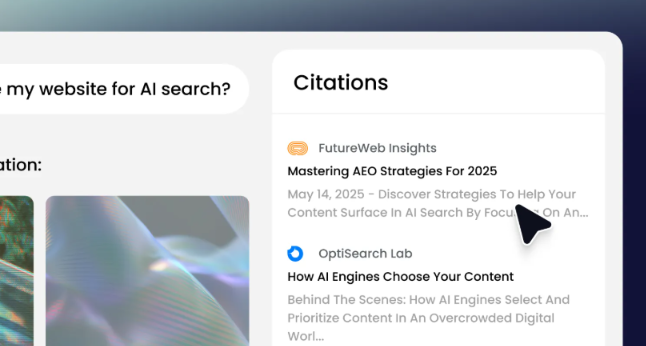Google + Instagram: How New Indexing Changes Could Shape SEO
As of July 10, 2025, Google will be indexing Instagram content. That’s right—posts, reels, and carousels from Instagram will soon be part of the searchable web. This update represents a major step in how Google defines and surfaces “relevant content.”
For years, platforms like Instagram and TikTok have existed outside the traditional search ecosystem. Now, Google is making it clear: multimodal SEO is no longer a niche strategy—it’s becoming a core part of the online experience Google wants to deliver to its users.
I only care about SEO, why this is important
Great question. This update marks a major shift in the way we approach SEO.
Here’s the breakdown:
- Short-form videos and visual content now have the potential to outrank traditional articles if they more effectively match search intent. In other words, SEO is no longer just about keywords and backlinks—it’s about delivering content in the most engaging format for the user.
- Google’s definition of relevance is expanding to include user experience, visual appeal, and multimodal content. If audiences spend more time interacting with a reel, carousel, or visual post than with a standard blog article, that content now stands a better chance of securing top rankings.
How to optimize your social media posts for SEO
With this shift, social media content should now be developed through an SEO lens. Below is a breakdown of the key elements to keep in mind when optimizing social posts for search engines:
Search-intent-first captions and descriptions
Eye-catching visuals alone won’t cut it. To increase discoverability, captions and descriptions should directly address user questions and reflect real search queries. Always consider what your audience is searching for, then pair that intent with concise, valuable copy.
Hashtags as modern meta keywords
Hashtags have evolved into a crucial SEO signal, functioning much like the meta keywords of early SEO days. They categorize your content, provide Google with additional context, and improve search visibility. Skipping them means missing out on organic reach.
Subtitles and text overlays are essential
Platforms like Instagram and TikTok thrive on silent consumption. This makes subtitles, on-screen text, and clear messaging vital—not just for accessibility, but also for SEO. Search engines can index this text, making your content both user- and crawler-friendly, even without sound.
Collaboration drives results
True SEO impact comes from aligning with social media teams. Work together to create content informed by both search demand and product priorities. For instance, promoting accounting software could involve posts targeting queries like “best tools every accountant needs.” By tying social strategy to search intent and product relevance, your content can rank on Google while directly meeting audience needs.
What can we learn from Instagram and TikTok
For SEO professionals, this shift opens up an exciting opportunity to reimagine how we approach content optimization across different channels. The rise of Instagram and TikTok has already provided valuable lessons that are essential to put into practice.
Visual-First Content
People are naturally captivated by dynamic, visual content—it feels fresh, engaging, and emotionally compelling.
The challenge is bringing that same energy to traditional websites. What if we leaned into interactive visuals, short-form video, or even user-generated content as part of our strategy? The real opportunity lies in blending the immediacy and visual appeal of social media with the depth of longer-form web experiences.
The Human Element
Beyond visuals, there’s a growing appetite for content created by real people.
As AI-generated material becomes increasingly widespread, audiences are seeking the authenticity and sincerity that only human-made content can deliver.
Videos that showcase genuine people, emotions, and stories help close the distance between a brand and its audience, fostering stronger connections. This human element makes content more personal and relatable—something AI still struggles to truly capture.
Sharing the Full Experience
One of the most powerful aspects of social media—especially on platforms like Instagram and TikTok—is the ability to capture and share an entire experience.
Take restaurant reviews, for example. Viewers don’t just see the plate of food; they’re taken on the whole journey. From stepping through the front door, to noticing the décor and even the bathrooms, to browsing the menu and prices, and sometimes even getting tips on what to wear.
It’s an immersive, first-person perspective that conveys the atmosphere, the vibe, and the authenticity of the moment—something plain text alone can’t deliver.
So how can websites embrace this same kind of storytelling? Perhaps by weaving in first-person narratives, virtual tours, or behind-the-scenes content that allows visitors to experience the full story of your product or service.
Key Takeaways
The inclusion of Instagram and TikTok content in Google search highlights how SEO is shifting toward a truly multimodal landscape. To keep your strategy ahead of the curve, consider these takeaways:
- Adopt multimodal SEO: Don’t limit yourself to long-form blogs. Incorporate short-form videos, visuals, and social content—and optimize them for both user engagement and search visibility.
- Expand beyond your website: SEO is no longer confined to your site. It now encompasses your brand’s entire digital footprint, from social platforms to paid ads and multimedia.
- Bridge SEO and social: Partner closely with your social media teams. Their content can directly answer user questions, leverage visual storytelling, and integrate SEO-friendly captions and hashtags.
- Bring the social feel to your site: Ask yourself—how can your website mirror the immediacy and appeal of social media? Make it more human, more visual, and more current.












